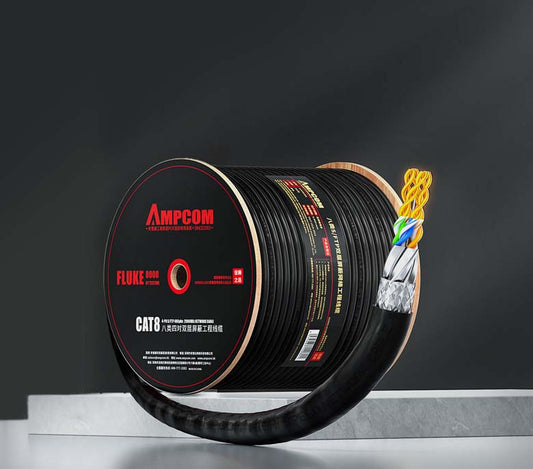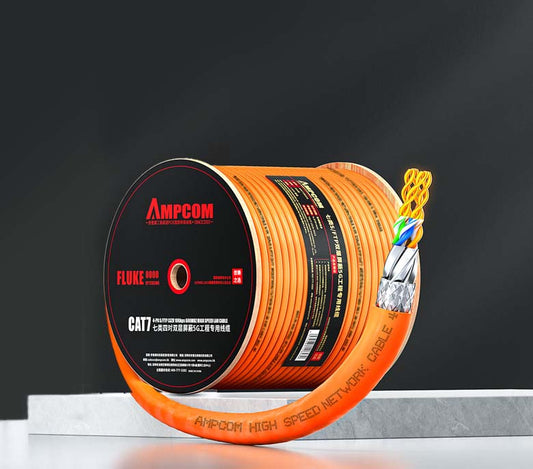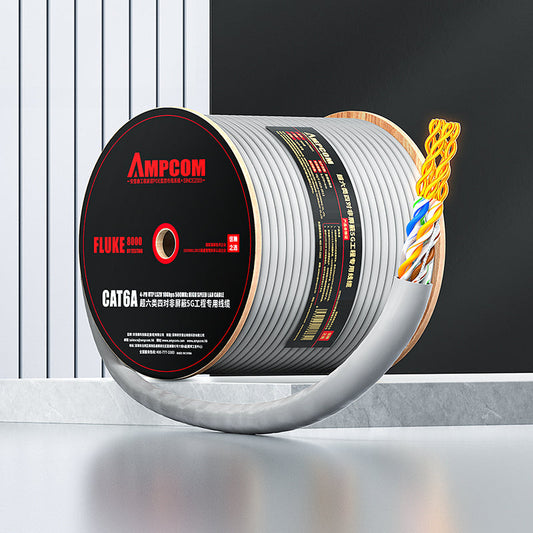How Does Ethernet Cable Length Impact Signal Loss and Network Performance?
Quick Navigation
Ethernet cables are a crucial component in ensuring smooth data transmission across networks. However, the length of these cables can significantly affect the performance of your network. Understanding the relationship between cable length, signal loss, and overall network performance is essential for optimizing your network setup. Let’s dive into the factors that make cable length an important consideration when setting up your Ethernet network.
Understanding Ethernet Cable Length
Ethernet cables are designed to transmit data over various distances. However, each type of cable has a maximum recommended length to maintain optimal performance. For standard Cat 5e and Cat 6 cables, the maximum length is typically 100 meters (328 feet). Exceeding this length can lead to signal degradation, which directly impacts network performance.
Impact of Signal Loss on Performance
As the Ethernet cable length increases, the quality of the signal begins to degrade. This is known as signal loss or attenuation. When the signal travels longer distances, the electrical impulses weaken, causing slower speeds, packet loss, and potential data transmission errors.
| Cable Type | Max Length | Typical Performance |
|---|---|---|
| Cat 5e | 100 meters (328 feet) | Up to 1 Gbps |
| Cat 6 | 100 meters (328 feet) | Up to 10 Gbps (at shorter lengths) |
| Cat 6a | 100 meters (328 feet) | Up to 10 Gbps |
| Cat 7 | 100 meters (328 feet) | Up to 10 Gbps |
| Cat 8 | 30 meters (98 feet) | Up to 40 Gbps |
As seen in the table, the maximum length varies depending on the cable type. For high-speed applications, such as 10Gbps, using cables like Cat 6 or Cat 6a becomes crucial. Exceeding the recommended length can result in slower speeds and network instability.
Best Practices to Minimize Signal Degradation
Signal loss or attenuation is one of the biggest challenges when setting up an Ethernet network. As the cable length increases, the integrity of the signal decreases, leading to slower speeds, data errors, and network instability. To mitigate these effects and ensure your network operates at optimal performance, follow these advanced practices:
1. Select the Right Cable Type Based on Speed and Distance
Choosing the correct Ethernet cable is the first and most important step in minimizing signal degradation. Different Ethernet cables support different bandwidths and transmission distances. For networks that require higher speeds and longer distances, cables like Cat6a and Cat7 are ideal, as they support speeds up to 10Gbps and can maintain high performance over longer distances compared to Cat 5e or Cat 6 cables. Cat 6a, for instance, is capable of maintaining 10Gbps speeds over 100 meters, making it an excellent choice for enterprise-level networks that require both speed and reliability.
2. Minimize Cable Length to Reduce Signal Loss
One of the most effective ways to prevent signal degradation is by reducing the length of the Ethernet cables in your network setup. Ethernet signals weaken as they travel through cables, so using shorter cables between devices ensures that the signal maintains its integrity. Whenever possible, opt for the shortest cable lengths to reduce attenuation. Keep in mind that even a few extra meters of cable can introduce significant signal loss, especially when dealing with high-bandwidth applications like video streaming or data transfer in data centers.
3. Use Signal Boosters and Extenders
For longer connections, such as those running between distant buildings or across large office spaces, using Ethernet extenders, repeaters, or signal boosters can help amplify the signal and extend the reach of your network. These devices work by regenerating the Ethernet signal, ensuring that the data remains strong and clear over extended distances. Ethernet extenders are especially useful for maintaining performance over distances greater than 100 meters, where typical Ethernet cables would experience significant degradation.
4. Consider Fiber Optic Cabling for Long Distances
When Ethernet cable lengths exceed 100 meters or require high-speed, long-distance connections, fiber optic cables are the best alternative. Unlike traditional copper cables, fiber optic cables transmit light signals, which are not subject to electromagnetic interference (EMI) or signal loss over long distances. Fiber optics can maintain network performance over much longer distances, typically up to 10 kilometers, without experiencing attenuation. For high-performance networks that require long-distance data transmission with minimal signal degradation, fiber optics are the future-proof solution.
5. Properly Terminate Cables to Ensure Optimal Signal Flow
Improper termination of Ethernet cables can lead to signal issues, including data errors and slow speeds. It's crucial to follow proper cable termination standards, such as the T568A or T568B wiring standards, ensuring that both ends of the cable are correctly wired. This guarantees that the signals flow smoothly through the network, without interruptions or degradation. Using quality connectors and ensuring correct termination practices will ensure that your network performs at its best.
FAQ
Why does Ethernet cable length affect network performance?
As Ethernet cable length increases, signal degradation or attenuation occurs, leading to slower network speeds, increased packet loss, and potential errors. In larger networks, such as those in office buildings, data centers, or manufacturing environments, managing cable length is crucial to ensure reliable network performance. For high-speed applications, such as streaming or VoIP, it's important to keep Ethernet cables within optimal lengths to avoid signal loss and network instability.
What is the maximum cable length for Cat 5e and Cat 6 Ethernet cables?
For optimal performance, both Cat 5e and Cat 6 Ethernet cables should not exceed 100 meters (328 feet) in length. Exceeding this length can lead to significant signal loss, causing slow speeds and data transmission errors. If your network requires longer distances or higher speeds (10Gbps and beyond), consider using Cat 6a or Cat 7 cables, which offer better performance over extended distances. These cables are ideal for future-proofing high-speed networks in offices or server rooms.
When should I choose Cat 6a or Cat 7 cables for my network?
Use Cat 6a or Cat 7 Ethernet cables when you need higher-speed applications, longer distances, or future scalability. These cables support up to 10Gbps speeds and are ideal for environments where fast data transfer is essential. If you are setting up a high-speed network in large office buildings, server rooms, or data centers, Cat 6a and Cat 7 cables will provide the necessary bandwidth and reduce signal degradation.
How do I select the best Ethernet cables for my office network?
When selecting Ethernet cables for your office network, consider the required speed, distance, and future scalability. For most office setups, Cat 5e or Cat 6 cables should suffice. However, if you're looking for a future-proof network capable of supporting high-speed applications e.g., cloud computing, large file transfers, choose Cat 6a or Cat 7 cables. Additionally, for environments with significant electromagnetic interference (EMI), you may need shielded cables like STP or S/FTP cables.



